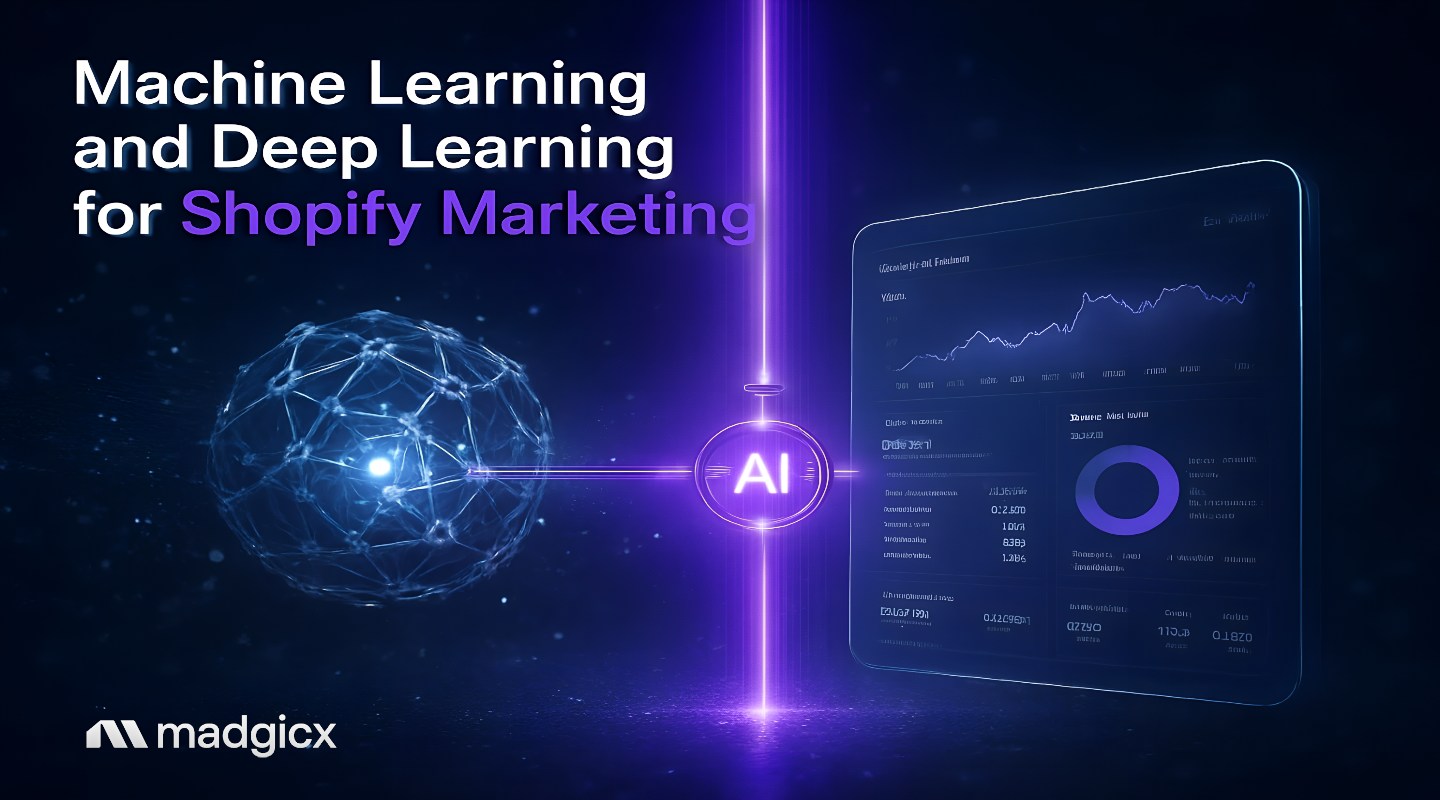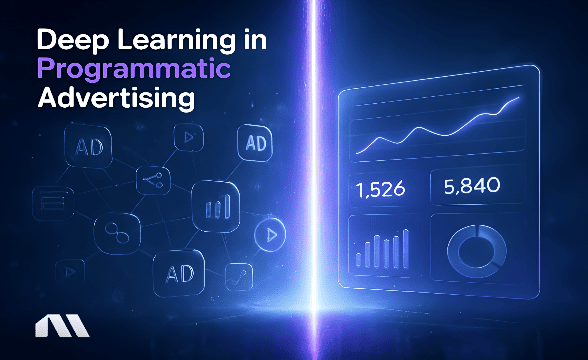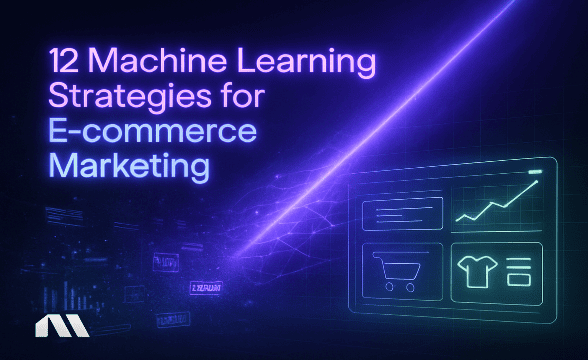Learn how machine learning and deep learning transform Shopify marketing with AI automation, predictive analytics, and strategies that boost revenue.
Picture this: It's 2 AM, and AI-powered systems are optimizing your Shopify store's ad budgets, personalizing product recommendations for each visitor, and timing emails based on customer behavior patterns. Meanwhile, your competitor is still manually tweaking campaigns and wondering why their conversion rates keep dropping.
This isn't some futuristic fantasy – it's happening right now for thousands of Shopify store owners who've embraced machine learning and deep learning for Shopify marketing. We're talking about automated personalization, predictive analytics, and intelligent campaign optimization that can boost revenue by 20-40% within 2-4 weeks of implementation.
Here's what makes this even more exciting: according to recent data from EcomPoser, companies using AI see at least a 20% boost in revenue, with personalized experiences powered by AI increasing revenue by up to 40%. We're not talking about marginal gains – we're talking about transformational growth that happens while you sleep while you focus on what you do best: running your business.
What You'll Learn in This Complete Guide
By the time you finish reading this guide, you'll have a clear roadmap for implementing machine learning and deep learning for Shopify marketing. We're covering:
- 8 proven ML/DL applications that can increase Shopify revenue by 20-40%
- Step-by-step implementation timeline with week-by-week milestones
- Specific ROI expectations and measurement frameworks for each strategy
- Advanced deep learning advertising optimization techniques used by top Shopify stores
Let's dive into the strategies that are reshaping e-commerce success in 2025.
The Machine Learning Revolution in Shopify Marketing
Before we jump into specific applications, let's get our terminology straight. Machine learning uses algorithms to analyze data patterns and make predictions or decisions without explicit programming for each scenario. Deep learning is a subset of ML that uses neural networks with multiple layers to process complex data relationships – think of it as ML's more sophisticated cousin.
In the Shopify ecosystem, this translates to systems that learn from your customer behavior, purchase patterns, and engagement data to optimize everything from product recommendations to ad targeting. The beauty? These systems get smarter over time, continuously improving their performance based on new data.
Why is 2025 the breakthrough year? Three key factors have aligned:
- Accessible AI tools (no coding required)
- Affordable implementation costs
- Proven ROI data that makes the business case crystal clear
Plus, with iOS privacy changes making manual advertising optimization increasingly difficult, AI-powered solutions have become essential for maintaining competitive performance.
Pro Tip: Start with high-impact, low-complexity applications first. You don't need to revolutionize your entire marketing stack overnight – strategic implementation beats overwhelming yourself with too many changes at once.
AI-Powered Product Recommendations That Actually Convert
Let's start with the most accessible and immediately impactful application: AI-powered product recommendations. Modern machine learning algorithms analyze customer behavior patterns including browsing history, purchase data, time spent on pages, and even mouse movement patterns to predict which products each visitor is most likely to buy.
The implementation process is straightforward. Shopify's native recommendation engine provides basic functionality, but third-party solutions like Yotpo, Bold, or LimeSpot offer more sophisticated deep learning models. These advanced systems consider factors like seasonal trends, inventory levels, profit margins, and cross-selling opportunities.
Expected ROI: According to Shopify's internal analysis, stores implementing AI personalization see an average 26% conversion rate increase. That's nearly one-third improvement in conversions from showing the right products to the right people.
Implementation Timeline:
- Week 1-2: Basic setup and data integration
- Week 3-4: Algorithm training and initial optimization
- Week 5-6: Performance monitoring and fine-tuning
- Week 7+: Ongoing optimization and expansion to new page types
The key is starting simple. Begin with "frequently bought together" recommendations on product pages, then expand to personalized homepage sections and email campaigns once you're seeing consistent results.
Predictive Email Marketing That Feels Personal
Email marketing gets a massive upgrade when you add machine learning to the mix. Instead of sending the same email to everyone at the same time, deep learning models analyze individual customer behavior to determine optimal send times, subject lines, and content for each subscriber.
Send-time optimization alone can boost open rates by 15-25%. The algorithm learns when each customer typically checks email – maybe Sarah opens emails during her morning coffee at 7 AM, while Mike prefers evening reading at 9 PM. Your email platform automatically schedules delivery for maximum engagement.
Dynamic content personalization takes this further. Based on purchase history, browsing behavior, and engagement patterns, the system customizes product recommendations, offers, and even email design elements for each recipient.
Expected ROI: Marketing automation delivers an impressive $5.44 return for every $1 spent, according to Nucleus Research. This ROI comes from increased open rates, higher click-through rates, and more conversions per email sent.
Quick Implementation Tip: Focus on abandoned cart sequences first. These emails already have high conversion potential, and AI optimization can push them from good to exceptional. Set up dynamic product recommendations showing the abandoned items plus complementary products, and let the algorithm optimize send timing and frequency.
For advanced implementation, consider integrating your email platform with your machine learning Facebook ads strategy to create cohesive cross-channel experiences.
Dynamic Pricing That Maximizes Revenue
Dynamic pricing might sound complex, but it's essentially using machine learning to adjust your prices based on demand, competition, inventory levels, and customer behavior. Think of it as having a pricing expert who never sleeps and can process thousands of data points instantly.
The ML algorithms continuously monitor:
- Competitor pricing
- Demand patterns
- Inventory levels
- Seasonality and customer segments
When demand is high and inventory is low, the system suggests price increases. When you need to move slow-moving inventory, it recommends strategic price adjustments to stimulate sales.
Expected ROI: Stores implementing dynamic pricing often see 15-40% revenue increases, with the higher end achieved by businesses with diverse product catalogs and strong data foundations. The key is starting conservatively – small price adjustments that test market response before implementing larger changes.
Implementation Complexity: Medium. You'll need to integrate pricing tools with your Shopify store, set pricing rules and boundaries, and establish monitoring systems. Tools like Prisync, Competera, or Shopify's native pricing apps can handle the technical heavy lifting.
The psychological aspect matters too. Customers accept price changes when they're gradual and logical. Sudden dramatic price swings can damage trust, so smart algorithms factor in customer perception alongside pure profit optimization.
AI-Powered Advertising That Never Sleeps
Here's where deep learning really shines – and where tools like Madgicx's AI Marketer become game-changers. Traditional advertising optimization requires constant manual monitoring, budget adjustments, audience testing, and creative rotation. AI-powered systems handle these processes automatically.
Deep learning models for advertising analyze thousands of data points including:
- Audience behavior
- Ad performance
- Conversion patterns
The system automatically alerts you when it’s time to pause underperforming ads, scales winning campaigns, and adjusts budgets based on real-time performance data.
Madgicx Case Study: One Shopify store owner using AI Marketer reduced their manual optimization time by 80% while improving their return on ad spend (ROAS) by 45%. The AI system caught performance issues at 3 AM that would have cost hundreds in wasted spend by morning.
Expected ROI: Stores typically see 30-50% reductions in customer acquisition costs within 4-6 weeks of implementing AI advertising optimization. The system eliminates manual errors, responds faster to performance changes, and provides 24/7 optimization.
The beauty of AI machine learning in social commerce is that it learns from your specific business patterns. The algorithm understands that your customers convert better on weekends, that certain product categories perform better with video ads, and that your audience responds to specific messaging angles.
Intelligent Customer Segmentation That Actually Works
Forget basic demographic segmentation – machine learning creates customer segments based on behavior patterns, purchase probability, lifetime value predictions, and engagement preferences. These AI-powered segments are dynamic, updating as customer behavior changes.
The ML algorithms identify patterns humans might miss. Maybe customers who browse for more than 10 minutes but don't purchase immediately have a 70% conversion rate when retargeted within 24 hours. Or perhaps customers who purchase on mobile devices have different product preferences than desktop buyers.
Implementation Process:
- Week 1: Data collection and integration setup
- Week 2-3: Algorithm training and initial segment creation
- Week 4: Testing segments with targeted campaigns
- Week 5+: Ongoing refinement and expansion
These intelligent segments power everything from email campaigns to advertising audiences to product recommendations. Instead of guessing who might be interested in your new product launch, the AI identifies customers with the highest purchase probability based on their behavior patterns.
Advanced Application: Predictive lifetime value modeling helps you identify which customers are worth investing more in acquisition costs. If the algorithm predicts a customer will spend $500 over their lifetime, you can afford higher advertising costs to acquire them compared to predicted $50 customers.
Pro Tip: Start with simple behavioral segments like "high-value browsers" or "repeat purchasers" before moving to complex predictive models. This builds confidence in the system while delivering immediate value.
Fraud Detection That Protects Your Revenue
E-commerce fraud costs businesses billions annually, but deep learning models can identify fraudulent transactions with remarkable accuracy. These systems analyze patterns in real-time, considering factors like device fingerprints, purchasing behavior, geographic data, and payment patterns.
Expected Impact: Modern deep learning fraud detection systems achieve accuracy rates often exceeding 90%, dramatically reducing both false positives (legitimate customers blocked) and false negatives (fraudulent transactions approved).
The implementation is typically handled through payment processors or specialized fraud detection services that integrate with Shopify. The AI runs in the background, flagging suspicious transactions for review while allowing legitimate purchases to process smoothly.
Business Impact: Beyond preventing direct losses from fraud, these systems improve customer experience by:
- Reducing legitimate transaction declines
- Speeding up the checkout process for trusted customers
- Protecting your payment processor relationships through reduced chargeback rates
Inventory Management That Predicts the Future
Running out of popular products or overstocking slow movers kills profitability. Machine learning algorithms analyze historical sales data, seasonal trends, marketing campaign impacts, and external factors to predict future demand with impressive accuracy.
These systems consider factors human analysis might miss:
- How weather patterns affect certain product categories
- How social media trends impact demand
- How competitor actions influence your sales patterns
The algorithms continuously learn and adjust predictions based on new data.
ROI Impact: Stores implementing ML-powered inventory management typically see 20-30% reductions in inventory costs through optimized stock levels, reduced waste from overstocking, and fewer lost sales from stockouts.
Implementation Considerations: Start with your top-selling products where demand forecasting has the biggest impact. As the system proves its accuracy, expand to your full catalog. Integration with your suppliers enables automatic reordering based on predicted demand.
For businesses running deep learning models in e-commerce advertising, inventory data becomes crucial for campaign optimization. No point driving traffic to out-of-stock products or promoting items you're trying to clear.
Advanced Deep Learning for Cross-Channel Optimization
The most sophisticated application combines all previous strategies into a unified deep learning system that optimizes across all marketing channels simultaneously. This approach considers how email campaigns affect social media engagement, how advertising impacts organic search performance, and how personalization influences customer lifetime value.
Custom deep learning models for ads can integrate data from your Shopify store, email platform, social media accounts, and advertising channels to create a holistic optimization strategy. The system understands that a customer who receives a personalized email is 40% more likely to convert from a Facebook ad within 48 hours.
Implementation Complexity: High, but the ROI justifies the investment for stores doing $1K+ monthly revenue. This typically requires specialized platforms like Madgicx that are built specifically for cross-channel AI optimization.
Expected Results: Stores implementing comprehensive deep learning in digital advertising strategies often see 50-80% improvements in overall marketing efficiency, with some achieving nearly hands-off acquisition and retention marketing.
Pro Tip: Cross-channel optimization works best when you have solid data foundations from individual channel optimizations. Master email automation and advertising optimization separately before attempting unified optimization.
Measuring Success: Your ML/DL ROI Framework
Success measurement starts before implementation. Establish baseline metrics for:
Revenue Metrics:
- Conversion rate by traffic source
- Average order value
- Customer lifetime value
- Revenue per visitor
Efficiency Metrics:
- Customer acquisition cost
- Return on ad spend (ROAS)
- Email open and click rates
- Time spent on manual optimization
Operational Metrics:
- Inventory turnover rate
- Fraud detection accuracy
- Customer service ticket volume
- Time to implement marketing changes
Track these metrics weekly during implementation and monthly for ongoing optimization. Most stores see initial improvements within 2-4 weeks, with full optimization achieved in 8-12 weeks.
According to recent studies, strategic ML implementation delivers significant ROI improvements, with successful implementations often seeing average improvements of 10-20% and top performers achieving much higher returns by focusing on high-impact applications first.
Implementation Timeline: Your 12-Week Roadmap
Weeks 1-2: Foundation
- Audit current data collection and integration
- Implement basic product recommendations
- Set up email automation platform
- Establish baseline performance metrics
Weeks 3-4: Core Applications
- Launch AI-powered email campaigns
- Implement dynamic pricing for test products
- Begin advertising automation setup
- Start customer segmentation analysis
Weeks 5-8: Optimization
- Refine recommendation algorithms
- Expand dynamic pricing to more products
- Optimize advertising automation rules
- Launch targeted campaigns to AI segments
Weeks 9-12: Advanced Integration
- Implement cross-channel optimization
- Add fraud detection systems
- Launch demand forecasting for inventory
- Scale successful applications across full catalog
Pro Tip: Don't try to implement everything simultaneously. Focus on 2-3 high-impact applications first, master them, then expand. This approach ensures you're building on success rather than overwhelming your team with too many changes.
Common Implementation Challenges (And How We Solve Them)
Data Quality Issues: ML algorithms are only as good as the data they're trained on. Clean your customer data, ensure consistent tracking across platforms, and establish data validation processes before implementation.
Integration Complexity: Modern tools like Madgicx handle most technical integration automatically, but you'll still need to connect various platforms. Start with native Shopify reporting integrations, then add third-party tools as needed.
Team Resistance: Some team members might worry about AI replacing their jobs. Frame ML/DL as tools that eliminate tedious tasks so they can focus on strategy and creativity. The most successful implementations combine AI efficiency with human insight.
Budget Constraints: Start with free or low-cost applications like Shopify's native AI features and email automation. Scale investment based on proven results rather than trying to implement everything at once.
FAQ: Your Machine Learning Questions Answered
How quickly can I see results from ML implementation?
Most Shopify stores see initial improvements within 2-4 weeks, with full optimization achieved in 8-12 weeks. Product recommendations and email automation typically show results fastest, while advertising optimization and inventory forecasting take longer to reach full potential.
Do I need technical expertise to implement these strategies?
No – modern ML tools like Madgicx's AI Marketer are designed for business owners, not developers. The platforms handle the complex algorithms while providing simple interfaces for monitoring and adjustment. Focus on understanding your business goals rather than the technical details.
What's the minimum budget needed for ML marketing tools?
You can start with native Shopify AI features (free) and basic email automation ($30-50/month). As you see results, scale up to more sophisticated tools. Most stores find that ML tools pay for themselves within 30-60 days through improved performance.
How do I measure ROI from machine learning investments?
Track conversion rates, customer acquisition costs, and revenue per visitor before and after implementation. Set up proper attribution tracking and compare performance across similar time periods. Successful stores typically see 20-40% improvements in key metrics within 8-12 weeks.
Can small Shopify stores benefit from deep learning?
Absolutely – AI tools now offer scalable solutions starting from basic automation to advanced deep learning models. Small stores often see bigger percentage improvements because they're starting from less optimized baselines. Start with product recommendations and email automation, then scale based on results.
What happens if the AI makes mistakes?
All reputable ML platforms include safeguards and human oversight options. You can set performance thresholds, spending limits, and approval requirements for major changes. The key is starting with conservative settings and gradually increasing automation as you build confidence in the system's performance.
Start Your ML Journey Today: Next Steps
The data is clear: machine learning and deep learning for Shopify marketing aren't just nice-to-have features anymore – they're essential for competitive e-commerce success. Stores implementing these strategies typically see 20-40% revenue improvements while reducing manual workload and improving customer experience.
Your implementation roadmap starts with one high-impact application. Based on our analysis of successful Shopify stores, here's the recommended priority order:
- Product recommendations (fastest implementation, immediate impact)
- Email automation (high ROI, builds on existing customer data)
- Advertising optimization (biggest long-term impact, requires more setup)
- Customer segmentation (enhances all other applications)
- Advanced applications (inventory, pricing, fraud detection)
The key is starting now rather than waiting for the "perfect" moment. Every day you delay implementation is revenue left on the table and competitive advantage given to stores that are already leveraging AI.
Tools like Madgicx's AI Marketer can handle the complex deep learning for social media advertising automatically while you focus on growing your business. The platform combines Shopify-specific optimization with advanced Meta advertising automation – essentially giving you expert-level optimization working around the clock.
Remember: the goal isn't to replace human decision-making entirely, but to eliminate tedious manual tasks so you can focus on strategy, creativity, and business growth. The most successful e-commerce businesses in 2025 will be those that master the combination of AI efficiency and human insight.
Ready to transform your Shopify marketing with machine learning? Start with one application, measure the results, and scale based on success. Your future self (and your bank account) will thank you.
Stop spending hours on manual Meta campaign optimization and start leveraging AI that works 24/7 to boost your revenue. Madgicx's AI Marketer combines deep learning algorithms with Shopify-specific optimization to automate your Meta advertising while you focus on growing your business.
Digital copywriter with a passion for sculpting words that resonate in a digital age.







.avif)







